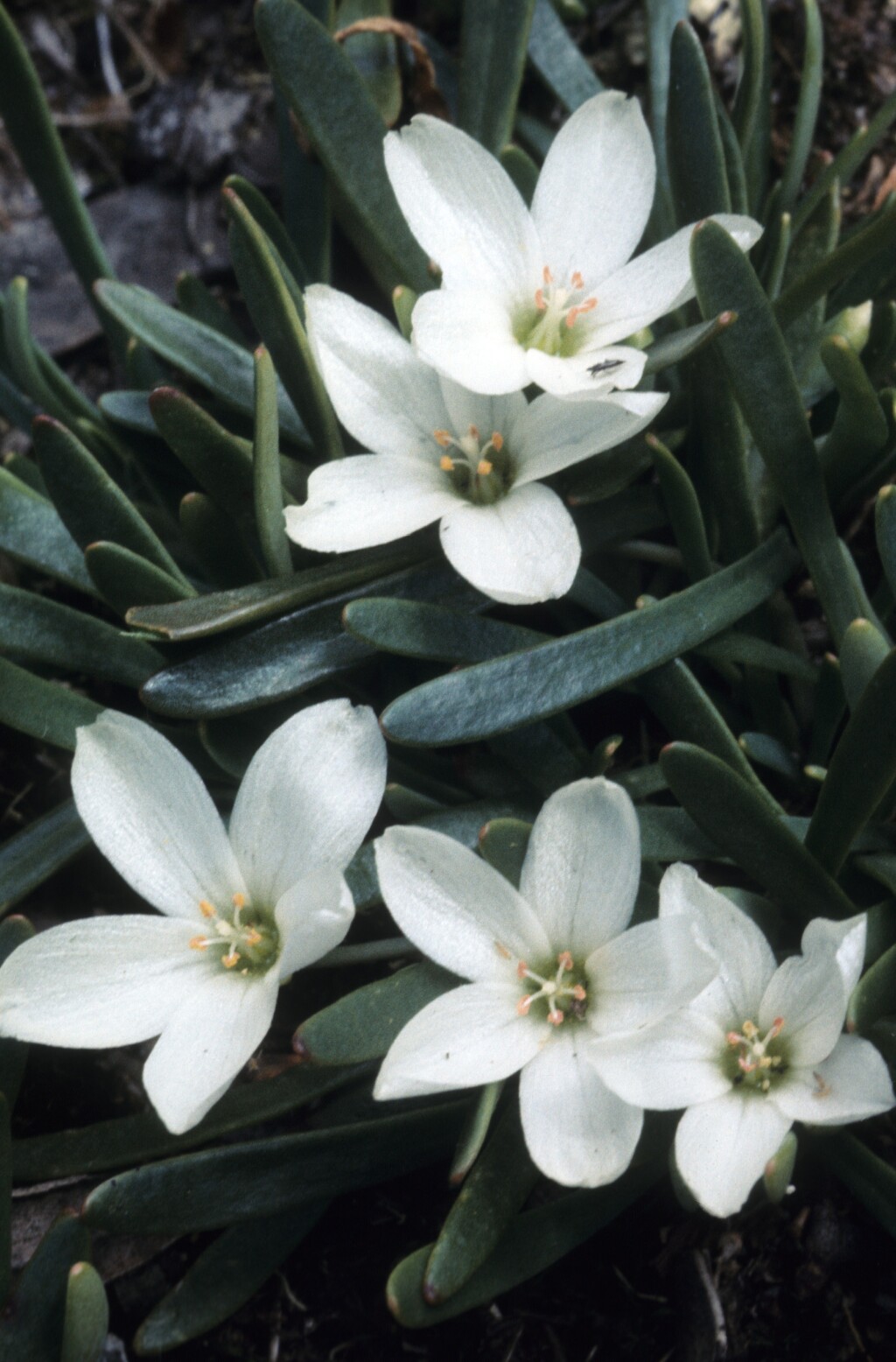Montia australasica
(Hook.f.) Pax & K.Hoffm.Plants densely tufted in terrestrial situations, often carpeting and no more than 3 cm high, lax when aquatic. Terrestrial forms with stems often pinkish, sometimes the lower internodes tuberous in lowlands, leaves alternate, 1–4 cm long, 1–3 mm wide, bright green or glaucous; aquatic forms with leaves to 12 cm long, 5 mm wide. Pedicels 4–50 mm long, decurving in fruit; sepals 2–4 mm long; petals 6–9 mm long, white or pale pink. Capsules subequal to sepals; seeds c. 1.5 mm diam. Flowers Oct.–Jan.
LoM, MuM, Wim, GleP, VVP, VRiv, MuF, GipP, OtP, WaP, Gold, CVU, GGr, DunT, NIS, EGL, EGU, WPro, HSF, HNF, OtR, MonT, VAlp. Also WA, SA, NSW, Tas. Widespread in cooler parts of the State, occurring mainly in perennial or seasonal swamps and slow-moving rivers in the lowlands, and in seepage areas or on bare gravelly or rocky ground in the alps. Forms with bead-like swellings in the lower internodes, which persist as leafless tubers and regenerate following inundation have been noted only in plants from the Volcanic Plain.
The enormous range in morphology and environmental amplitude of this species suggests taxonomic recognition of certain races may be warranted. Growth experiments under differing regimes of light and watering, however, reveal a high degree of inherent morphological variability within at least some forms (Nilsson 1966), but further investigation is needed.
Walsh, N.G. (1996). Portulacaceae. In: Walsh, N.G.; Entwisle, T.J., Flora of Victoria Vol. 3, Dicotyledons Winteraceae to Myrtaceae, pp. 215–224. Inkata Press, Melbourne.
 Spinning
SpinningNilsson, O. (1966). Studies in Montia L. and Claytonia L. and allied genera. Botanisker Notiser 119: 265–285.


